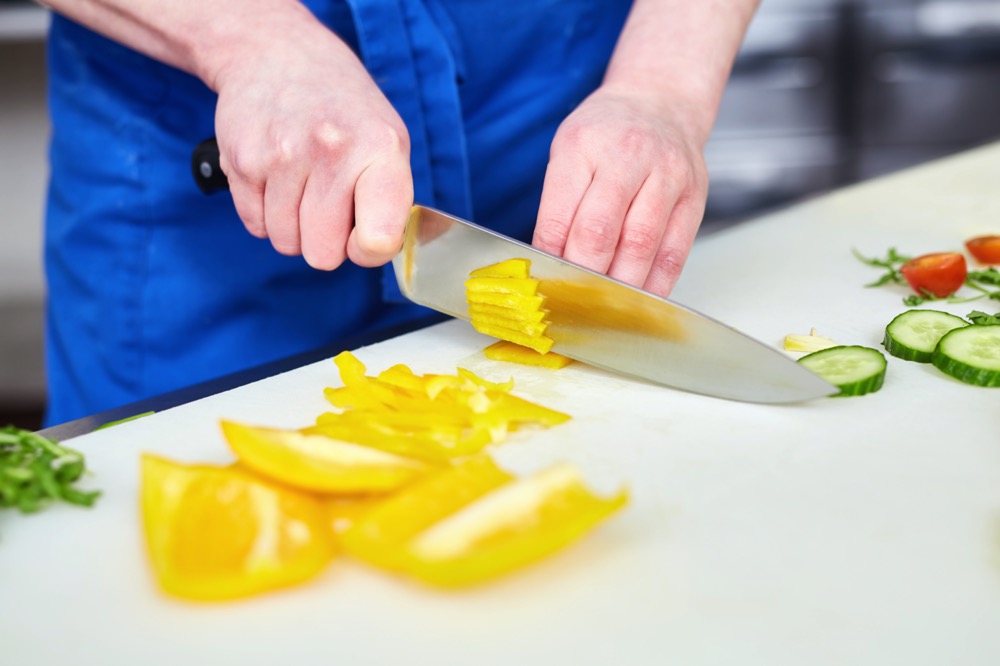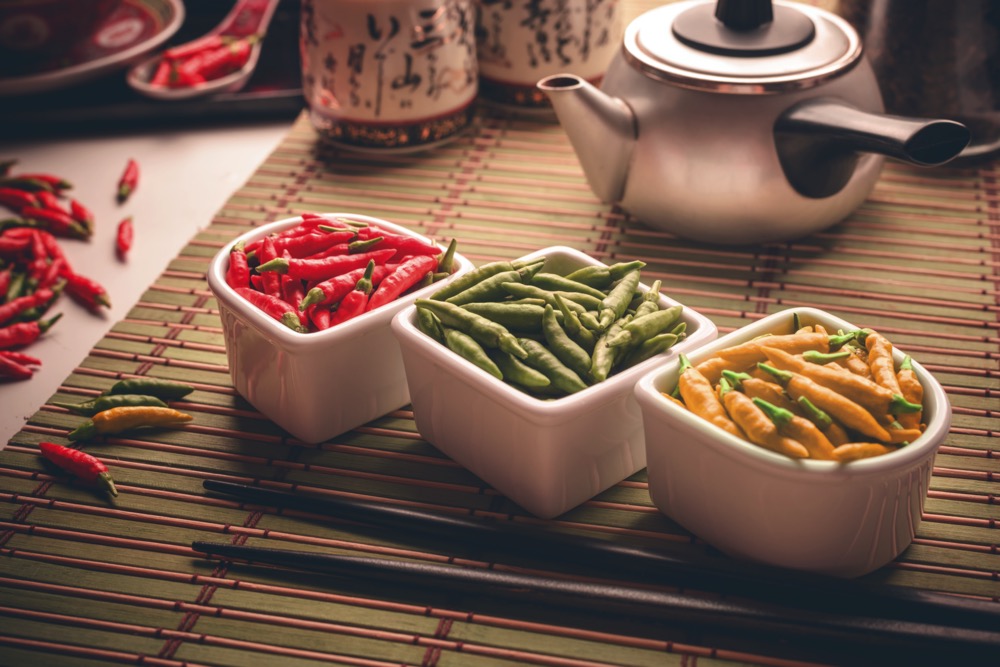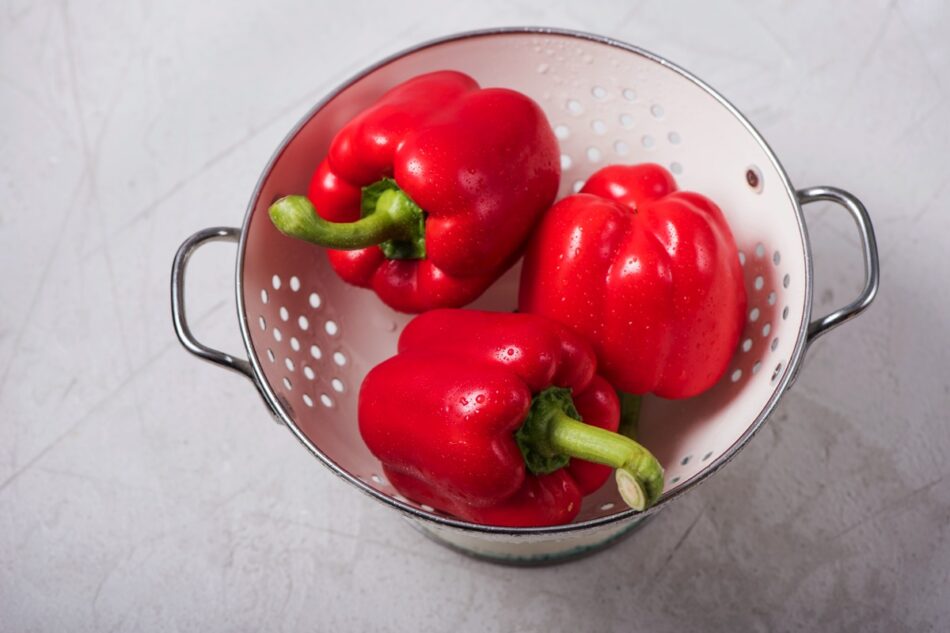Freezing peppers: step-by-step
Would you like to learn how to freeze bell peppers so that they remain fresh and can be eaten even after a couple of months? It’s possible if you do it well!
Peppers in general are among the most popular vegetables all around the world. There are dozens of types: from the popular ones with a sweet, mild taste to the spicy peppers which can even make you faint. From the sizable ones to the tiniest possible, and all that in a multitude of colors!
Peppers can be added to goulash or gratins, can be used as a base for delicious sauces (the spiciest ones included), can be eaten raw, cooked, grated, sliced, etc. The possibilities are endless!
Learn how to freeze peppers to have them remain fresh for a long time and ready for you to use whenever you need them to prep some dinner or an evening snack.
Prepping peppers for freezing
Bell peppers can be used to make delicious soups, sauces, and main courses. They’re incredibly popular in their raw form, as an ingredient for salads or gyros.
They are also often added to pizzas.
Bell peppers are great raw. Some people peel them before eating, which is not such a simple task to handle! Pouring some hot water over the vegetable first will help (we peel tomatoes in a similar way).
Before you decide to freeze some peppers, pick out the nicest ones. If your peppers look even slightly off before freezing, you can be sure it’s going to be much worse after thawing in a couple of months.
Freezing slows the process of spoiling down but doesn’t stop it altogether. Discard all overly ripe peppers, ones that are too soft, that begin to crinkle or display any discoloration. It’s better to use them right away when fresh than to freeze them and let them go off.
Always pick nice and fresh peppers if you intend to freeze them.
To prep peppers for freezing, wash them well and dry carefully (you can use paper towels or a strainer for that). It would be perfect if you take the time to peel them, too. Pepper’s skin is thin but can sometimes be unpleasant to chew on. Especially if you use your peppers in a letcho; your guests will end up removing tiny skin parts from their mouth (which will inevitably happen, as the skin will peel off of the vegetable on its own when exposed to higher temperature).

Whether you peel the pepper or not depends on the meal you intend to use it for after thawing. If it’s going to be goulash, soup, or a gratin, consider removing the skin before freezing.
When done, get rid of the cores and seeds as well. It’s not recommended to eat them and we typically remove them anyway when prepping meals.
Because of its size, a classic bell pepper should be cut into strips, cubes, or any other shape. You’ll need to cut it in half anyway to remove the core, so cutting or slicing doesn’t add much to what you have to do anyway!
The smallest peppers (chili, peperoncino) can be frozen in whole, with seeds and cores left intact.

Whichever form you choose for freezing your peppers, you can now put them in a ziplock bag or a container.
Blanching peppers
You can also blanch your peppers before freezing them. It’s enough to treat them to a 10-min salty bath in boiling water and hold them under cold, running water afterward. Once complete, dry them on paper towels which help get rid of the moisture fast.
Blanching is an optional step when it comes to peppers. You don’t have to do it; it’s ok to freeze raw peppers as well.
You can also opt for a quick frying action in a pot or pan. Not only will your veggies last a bit longer; the peppers will also shrink a little, letting you save a bit of space in the freezer!
Whether you do that or not again depends on the meal you intend to use them for after thawing.
How fo freeze peppers
In an ideal scenario, you should put your peppers in a refrigerator for a couple of hours before freezing them. The process will give you the best results and the veggies will remain fresh for longer.
You should also remember to dry your sliced or cubed peppers well on a paper towel. The drier they are, the better the taste after thawing.
Some freezers come with Fast Freeze containers – if you use them, your products will be frozen faster. If you happen to have them available, it’s best to place your peppers there.
And most importantly…
If your peppers happen to thaw (because of an equipment failure or power outage) you can’t freeze them back even if the break wasn’t long.
This rule applies to all frozen fruits and vegetables. If it happens to you, you have to use them immediately or throw them out.
Thawing peppers
If prepped and frozen properly, peppers can be kept in your freezer for up to 12 months.
Try to use them during that year you have. Although, to be frank, I personally keep my frozen food for longer and it’s still perfectly fine.
Before using your peppers to fix your favorite meal, in some cases it’s recommended to thaw them first. You don’t need to do that if you’ll use them for letcho or goulash, but if you’d like to add them to a salad or enjoy raw, it’s best to take the time to thaw them well.
It’s possible to spoil a perfectly fine frozen product through improper thawing.
And since you’ve spent so much time on prepping, freezing, and storing the peppers, spoiling them at this last stage would be a shame.
I personally advocate for slow thawing in room temperature or a refrigerator. The slower you thaw the peppers, the more crunchy and bouncy they will come out.Last but not least: remember that it’s not recommended to thaw your peppers in a microwave! They are going to lose most of the vitamins and will be considerably softer. If you don’t care about the texture, it’s better to put them directly in a pot or a pan to have them thaw on their own.

